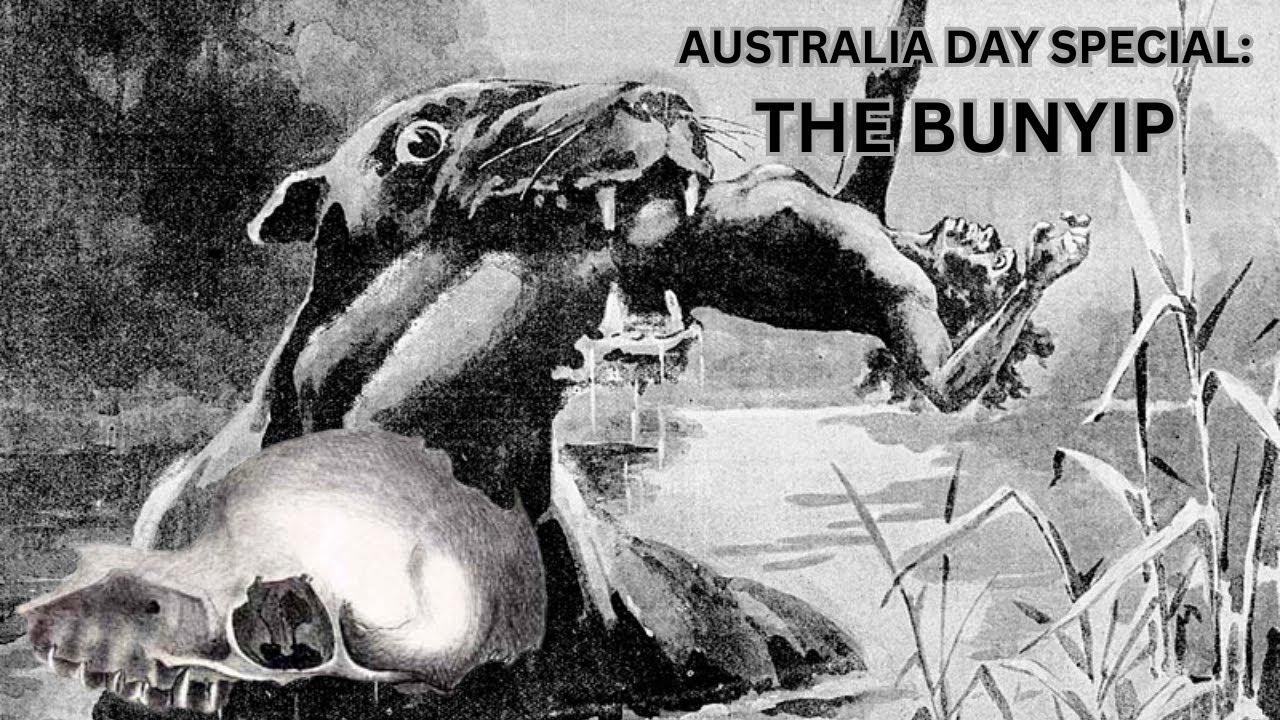
when Horror Yearbook – The Bunyip has fascinated Australians for centuries. It is a creature rooted in Aboriginal mythology. Generations have passed down the legend orally. People shared stories around fires in ancient camps. Locals say the Bunyip lurks in swamps and billabongs. Many people fear its presence across southeastern Australia. They often describe it as a terrifying water spirit. No one has solved the mystery surrounding it.
The word “Bunyip” comes from the Wemba-Wemba language. It means “devil” or “evil spirit.” Aboriginal tribes believed the creature had magical powers. People said it punished those who entered sacred waters. The stories helped protect people from danger. Parents warned children not to go near certain lakes. Locals often blamed strange noises on the creature. Nighttime sounds in the wetlands increased the fear.
“Read about: The Legend of Tengu: Guardians of the Forest and Mountain Spirits”
Descriptions of the Bunyip vary across regions. Some say it has a dog-like face and flippers. Others describe it with a long neck and tusks. People estimate its size from small to enormous. Early European settlers reported strange sightings in the wild. Explorers found mysterious tracks near rivers and lagoons. Farmers discovered livestock dead near the water’s edge. Locals blamed the creature for those unexplained deaths. Witnesses describe its cry as a haunting, booming sound.
The Bunyip holds deep meaning for Indigenous Australians. It represents respect for nature’s power and mystery. Sacred sites are often linked to Bunyip legends. These stories were passed down through oral tradition. They were used to explain natural dangers in the bush. The creature is part of Dreamtime mythology. Elders told tales to keep people away from danger. The Bunyip was not just a monster but a guardian.
“Read more: Creative DIY Home Decor: Personal Touches on a Budget”
Some researchers believe the legend has a real basis. Scientists found fossils of extinct animals in swamps. Giant marsupials may have inspired Bunyip stories. People often link the Diprotodon to the legend. It was a large, hippo-like animal that lived long ago. Early Aboriginal people might have seen its remains. Later settlers mistook bones for monsters. Someone once displayed a skull as a Bunyip’s head. Experts later identified that skull as belonging to a horse.
The Bunyip remains popular in Australian culture today. Books, movies, and children’s shows often feature the creature. Towns display statues to celebrate the legendary figure. Local folklore embraces the symbol in many forms. Communities organize festivals inspired by the myth. Bunyip-themed locations attract curious tourists year-round. Classrooms and museums regularly share related stories. Artists and educators help keep the legend alive.
Many places in Australia report Bunyip activity. Lake George and the Murray River attract curious visitors. Swamps near Victoria appear often in old stories. Wetlands in South Australia hold unique local legends. Several locations attract tourists with mysterious reputations. Locals named Bunyip State Park in Victoria. Dense forest and dark water surround that park. Visitors often report feeling watched near rivers.
Fear of the unknown often influences human imagination. Australian waters provide both sustenance and serious danger. Untamed nature earns deep respect through powerful symbolism. Stories about mysterious beings caution people in wild places. Environmental myths help explain strange and unpredictable elements. Legends embody forces beyond human understanding and control. Silent landscapes inspire fear rooted in ancient instincts. Unknown creatures become characters in cultural storytelling.